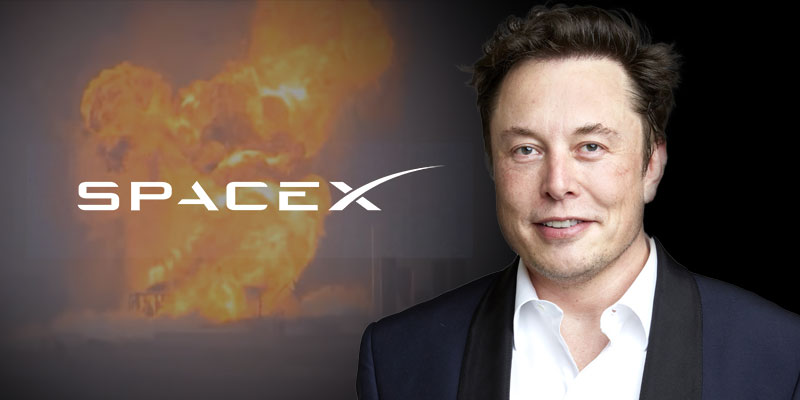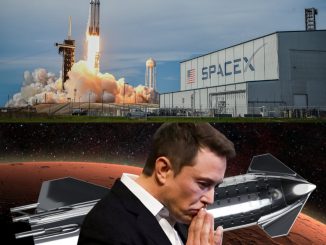In an extraordinary revelation that has left the world in awe, Elon Musk has announced a groundbreaking development that could reshape the future of space exploration forever. Musk and his company, SpaceX, have successfully designed a light-speed engine that could cut the travel time to Mars down to just 30 minutes.
This revolutionary technology, still in its early stages, promises to revolutionize how humanity travels in space and takes a significant step forward in making interplanetary travel a reality.
The idea of traveling to Mars has long captured the imagination of people across the globe. Over the years, there have been many plans, missions, and proposals to reach the Red Planet, but the limitations of current technology have always made it seem like a distant dream.
With the new light-speed engine unveiled by Musk, that dream is closer than ever before. If successful, this technology would dramatically change the timeline for Mars exploration, making it possible for humans to travel to Mars and back in a fraction of the time it would currently take.
For decades, the idea of light-speed travel has been confined to the realm of science fiction. In popular culture, from Star Trek to Star Wars, light-speed engines have been a staple of space exploration, allowing ships to travel vast distances in the blink of an eye.
However, these concepts were always theoretical, with no practical application. That is, until now. With Musk’s announcement, the concept of light-speed travel is no longer just a fantasy but a potential reality, thanks to the innovative work being done by SpaceX.
The new engine is designed to accelerate a spacecraft to speeds that are a fraction of the speed of light, drastically reducing the time required to travel between Earth and Mars. Currently, the fastest spacecraft ever built can take anywhere from six to nine months to reach Mars, depending on the positions of the planets.
However, Musk’s new light-speed engine could reduce that journey to just 30 minutes, a mind-boggling advancement in space travel. The speed at which the spacecraft will travel will be unparalleled, with the ability to cover the vast distances of space in the shortest time possible.

According to Musk, the new engine represents a major leap in technology that will make interplanetary travel a viable option for humanity in the not-so-distant future. Musk has long been a vocal advocate for making humanity a multiplanetary species, and this new engine could be the key to achieving that vision.
By dramatically reducing travel time to Mars and other planets, SpaceX’s new technology could open up new possibilities for human exploration and colonization of the solar system.
The primary goal of this light-speed engine is to overcome one of the biggest challenges of space exploration: the vast distances between planets. While traveling to Mars has always been a goal for space agencies like NASA, the lengthy travel time has been a significant barrier.
Musk’s new engine promises to eliminate this barrier, making the journey to Mars feasible in a matter of minutes rather than months. This technology could pave the way for the development of permanent colonies on Mars and other celestial bodies, which Musk has envisioned as part of his long-term plan for human space exploration.
The new engine, while still in the early stages of development, has already generated significant excitement in the scientific community. SpaceX engineers are working tirelessly to fine-tune the technology, ensuring that it can safely and efficiently transport humans and cargo to Mars.
The implications of this technology extend far beyond just Mars; the light-speed engine could also be used for other interplanetary missions, potentially allowing for faster exploration of the entire solar system.
One of the most exciting aspects of the light-speed engine is its potential to make space travel more accessible to the general public. Musk’s long-term goal has always been to make space exploration not just a government endeavor, but something that private individuals and companies can participate in as well.
With the development of this new engine, Musk is one step closer to making space travel an everyday reality. By drastically reducing travel time and making interplanetary journeys more efficient, this new engine could open up opportunities for people to travel to Mars and beyond in the future.

SpaceX’s commitment to making space travel safer and more affordable has been a key driver behind the company’s success. Musk has always emphasized the importance of making space exploration more accessible, and the development of this new light-speed engine is another step toward that goal.
While the engine’s technology is still in its infancy, the potential it holds for the future is immense. If successful, it could usher in a new era of space exploration, where traveling to other planets is no longer a distant dream, but an achievable reality.
In addition to its potential for space exploration, the light-speed engine could have significant implications for other industries. The ability to travel vast distances at incredible speeds could have applications in fields such as telecommunications, transportation, and even space tourism.
By dramatically reducing the time required to travel long distances, this technology could transform how we connect with others and move around the planet.
Despite the excitement surrounding Musk’s announcement, there are still many challenges to overcome before the light-speed engine can become a reality. The technology required to achieve such high speeds is still in its infancy, and there are many technical hurdles to address before it can be used for human space travel.
Additionally, the impact of traveling at such high speeds on the human body is still unknown, and further research will be needed to ensure that astronauts can safely endure such journeys.
Musk has always been known for his bold and ambitious goals, and the development of this light-speed engine is no exception. He has repeatedly stated that his vision for the future of humanity involves not just exploration, but the colonization of other planets.

The development of this new engine could bring that vision closer to reality, making it possible for humans to live and work on Mars and other planets in the near future.
The announcement of the light-speed engine has garnered widespread media attention, with many wondering how soon SpaceX will be able to test and deploy the technology. Musk has indicated that the company is already in the early stages of testing, and while there are still many challenges to overcome, he remains optimistic about the future of space travel.
If successful, this new engine could become the backbone of SpaceX’s future missions, transforming the way humanity explores the cosmos.
As SpaceX continues to develop and refine the light-speed engine, all eyes will be on the company’s progress. The implications of this technology are vast, and the potential for revolutionizing space exploration and interplanetary travel is immense.
With Musk at the helm, SpaceX is poised to take humanity to new heights, pushing the boundaries of what is possible in space travel.



